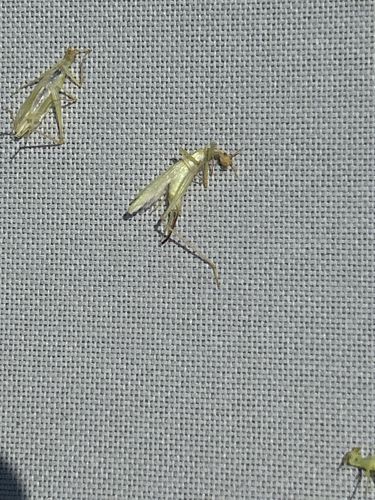Thrips
Scientific Name: Various species (e.g., Frankliniella occidentalis, Thrips tabaci)
Order & Family: Order: Thysanoptera, Family: Various (e.g., Thripidae, Phlaeothripidae)
Size: Typically small, ranging from 0.5 to 1.5 mm in length.

Natural Habitat
Thrips are found in a wide variety of habitats, including agricultural fields, gardens, greenhouses, forests, and grasslands. They live on various plants, including fruits, vegetables, ornamentals, and weeds.
Diet & Feeding
Thrips feed by puncturing plant cells with their stylets (mouthparts) and sucking out the contents. They primarily feed on plant sap, pollen, and young plant tissues. Some species are predatory and feed on other small insects or mites.
Behavior Patterns
Thrips have a short life cycle, developing from egg to adult in a few weeks under favorable conditions. They reproduce rapidly, often parthenogenetically (without fertilization). Thrips are active fliers, especially when conditions are warm and dry, aiding in their dispersal. They tend to feed in sheltered areas of plants, such as within buds, flower petals, or leaf folds, making them difficult to detect and control.
Risks & Benefits
Risk: Thrips are significant agricultural and horticultural pests. Their feeding can cause silvering or bronzing of leaves, disfigured flowers and fruits, and reduced plant vigor. More importantly, many species are vectors for plant viruses, such as Tomato spotted wilt virus (TSWV), which can cause substantial crop losses. Benefits: Some thrips species are beneficial as predators of other small pests like mites and other insect larvae, contributing to natural pest control.
Identified on: 8/12/2025